



Cheyenne Mountain Complex
The Cheyenne Mountain Complex (CMC) outside Colorado Springs, CO is the main correlation center of the Integrated Tactical Warning and Attack Assessment (ITW/AA) system.
Cheyenne Mountain is the command, control, communication and intelligence center
for coordinating and controlling North American Aerospace Defense Command (NORAD) and United
States Space Command (USSPACECOM) missions. The facility houses operations centers which are equipped with processors, displays, and communications link the centers to forward sensors and to the NCC.
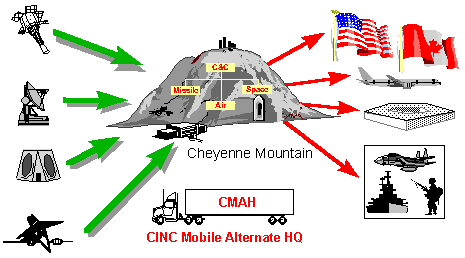 The centers, which conduct missile, atmospheric, and space warning activities, are:
The centers, which conduct missile, atmospheric, and space warning activities, are:
- The Air Operations Center (AOC) [also known as the Air Defense Operations Center - ADOC] maintains constant surveillance of North American airspace to prevent overflight by hostile aircraft. It tracks over 2.5 million aircraft annually. The ADOC collects and consolidates surveillance information on suspected drug-carrying aircraft entering or operating within North America, and provides this information to counternarcotice
agencies.
- The Missile Warning Center (MWC) detects launches globally and determines whether they are a threat to North America.
- The Space Control Center (SCC) [also known as the Space Defense Operations Center - SPADOC] detects, identifies and tracks all man-made objects in space. It currently tracks over
8,000 objects including payloads, rocketbodies and debris. Knowing where these objects are contributes to several mission areas, including collision avoidance for the space shuttle crew.
- The NORAD/USSPACECOM Combined Command Center (CCC) [also known as the NORAD Command Center - NCC] serves as the hub for all activity within the workcenters. The Command Director (CO), an one-star general officer or colonel, is always on duty in the command center. It provides coordination and direction to the mission work centers, and forwards critical information from the other centers to the President and Prime Minister of Canada. The center supports the Commander in Chief NORAD/Commander in Chief US Space Command to provide warning and assessment of attack on North America or its allies to the National Command Authorities (NCA), the US Strategic Command (USSTRATCOM), and other users.
- The Combined Intelligence Watch Center (CWIC) [also known as the Combined Intelligence Center - CIC] serves is the indications and warning center for worldwide threats from space, missile, and strategic air activity, as well as geopolitical unrest that could affect North America and U.S. forces/interests abroad. The center's personnel gather intelligence information to assist all the Cheyenne Mountain work centers in correlating and analyzing events to support NORAD and US Space Command decision makers.
- The National Warning Facility is the US civil defense warning center located in the Aerospace Defense Command Post to provide FEMA with access to warning information at the same time it is available to NORAD. In case of attack, the center would sound the alarm over the civilian alerting circuits of the National Warning System [NAWAS].
- The Space and Warning Systems Center (SWSC) is responsible for the maintenance and evolution of mission-critical software meeting operational requirements for NORAD, USSPACECOM, and AFSPC2 for these Cheyenne Mountain Command and Control (C2) centers responsible for national attack warning/assessment and space surveillance/defense/control. The SWSC currently maintains in excess of 12 million lines of code on 34 separate operational systems written in 27 languages.
- The Weather Support Center (SOLAR) is located in building 1470 on
Peterson AFB but also reports to the Command Center.
There are five crews that man the centers. Each crew consists of approximately 40 people, and are designated as Alpha, Bravo, Charlie, Delta, and Echo. Under normal conditions only one crew will be on duty during an eight-hour shift.
With the development of large computers and with the advent of the threat of ballistic attack, NORAD developed a series of semiautomated warning and assessment systems, culminating with the development of the 427M system contained within Cheyenne Mountain, which became operational in 1979. As soon as the 427M system became operational NORAD and the US Air Force Air Defense Command developed a series of command-level programs to resolve operational and sustainment problems with the 427M system by the creation of individual acquisition programs with limited scope and cost. In 1981, the Air Force began a modernization effort consisting of
five separate acquisitions to replace aging and obsolete computer
systems at the Cheyenne Mountain Complex. By the mid 1980s, six programs were underway with an aggregate cost of almost $2 billion. It soon became evident that the set of Cheyenne Mountain upgrades needed to be restructured as a single, major, integrated upgrade program. The consolidated program was formally started in 1989.
The Cheyenne Mountain Upgrade (CMU) Program consists of upgrades to NORAD ballistic missile, air, space, and command center elements within the CMC, as well as upgrades and provides new capability to survivable communication and warning elements at the National Military Command Center (NMCC),USSTRATCOM, and other forward user locations. CMU additionally provides at Offutt AFB an austere backup to Cheyenne Mountain ballistic missile warning. CMU's modernization and new capabilities enhance the ability to rapidly and
accurately correlate ITW/AA information, providing commanders with timely, accurate, and unambiguous information regarding enemy missile, air, and space systems throughout the full spectrum of conflict. The CMU program consists of the following major subsystems:
- Granite Sentry provides a Message Processing Subsystem and a Video Distribution Subsystem, and it upgrades the NORAD Computer System display capability and four major centers: (1) the Air Defense Operations Center, (2) the NORAD Command Center, (3) the Battle Staff Support Center, and (4) the Weather Support Unit. Granite Sentry also processes and displays nuclear detection data provided from the Integrated Correlation and Display System.
In March 1993 the government awarded a contract to Martin Marietta (now Lockheed-Martin) to complete the Granite Sentry upgrades to the processing and display capabilities of the ADOC, the NCC, and the Operations Planning Staff, which performs nuclear, biological, and chemical event processing.
- The Communications System Segment Replacement (CSSR) is an internal Cheyenne Mountain Complex and Alternate Missile Warning Center communications system that provides connectivity between mission areas, sensors, and forward users.
- The Survivable Communications Integration System (SCIS) provides the system with reliable and survivable communications between the ten missile warning sensor sites, two correlation centers, and eight forward users for transmission and receipt of missile warning sensor data and other Integrated TW/AA information.
- The Space Defense Operations Center 4 provides an automated command, control, and communication capability for space defense and space surveillance to the National Command Authorities.
- The Command and Control Processing and Display System Replacement (CCPDS-R) provides near-real-time processing, display and distribution of ballistic missile ITW/AA information, including nuclear detonation reports, to the National Command Authorities and forward users.
- The Alternate Missile Warning Center, located at Offutt AFB, is functionally equivalent to Cheyenne Mountain's systems for processing, display, and distribution of missile warning data and is the prime correlation center providing missile warning data to USSTRATCOM for force management.
The five original acquisition programs for the Cheyenne Mountain Complex were initially scheduled for completion in 1987 at a cost of $968 million. After a series of delayed completion schedules and increased development cost estimates, as of 1994 the CMU program was 8 years behind schedule and $792 million over budget. Initial versions of several CMU subsystems that the Air Force declared operational were unreliable and did not meet users' requirements. As a result, those subsystems were operated in parallel with the systems they were meant to replace.
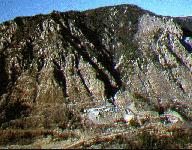

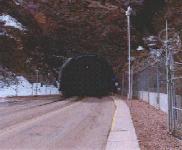
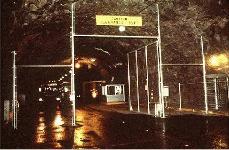
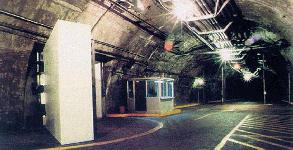
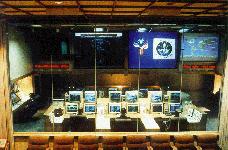
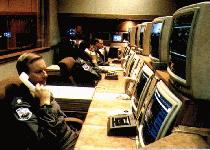
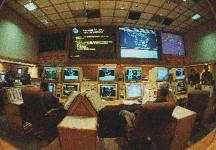

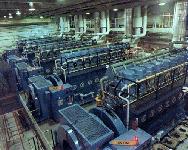
Sources and Resources
http://www.fas.org/nuke/guide/usa/c3i/cmc.htm
Maintained by Webmaster
Updated Monday, December 13, 1999 2:24:02 PM

















